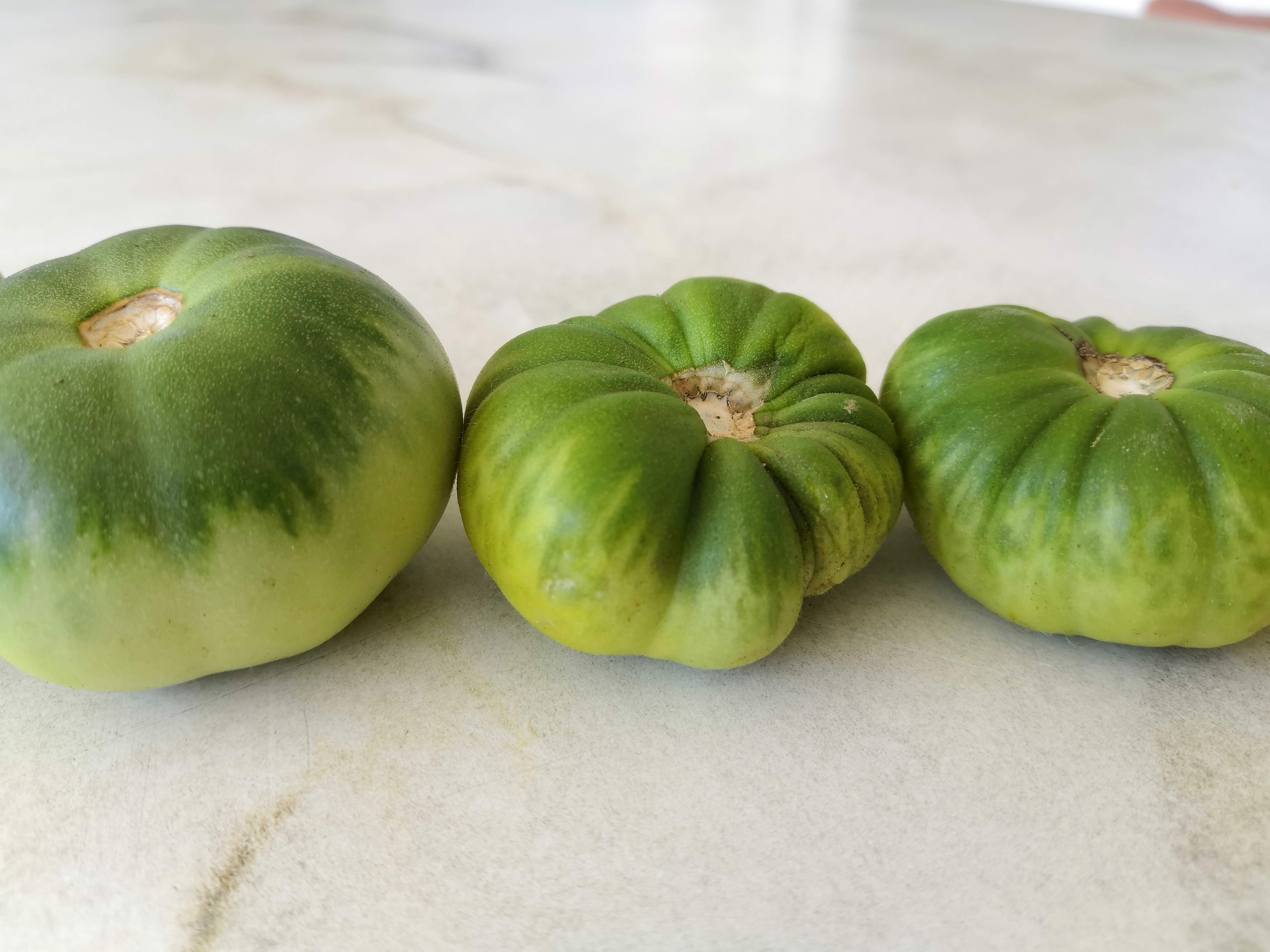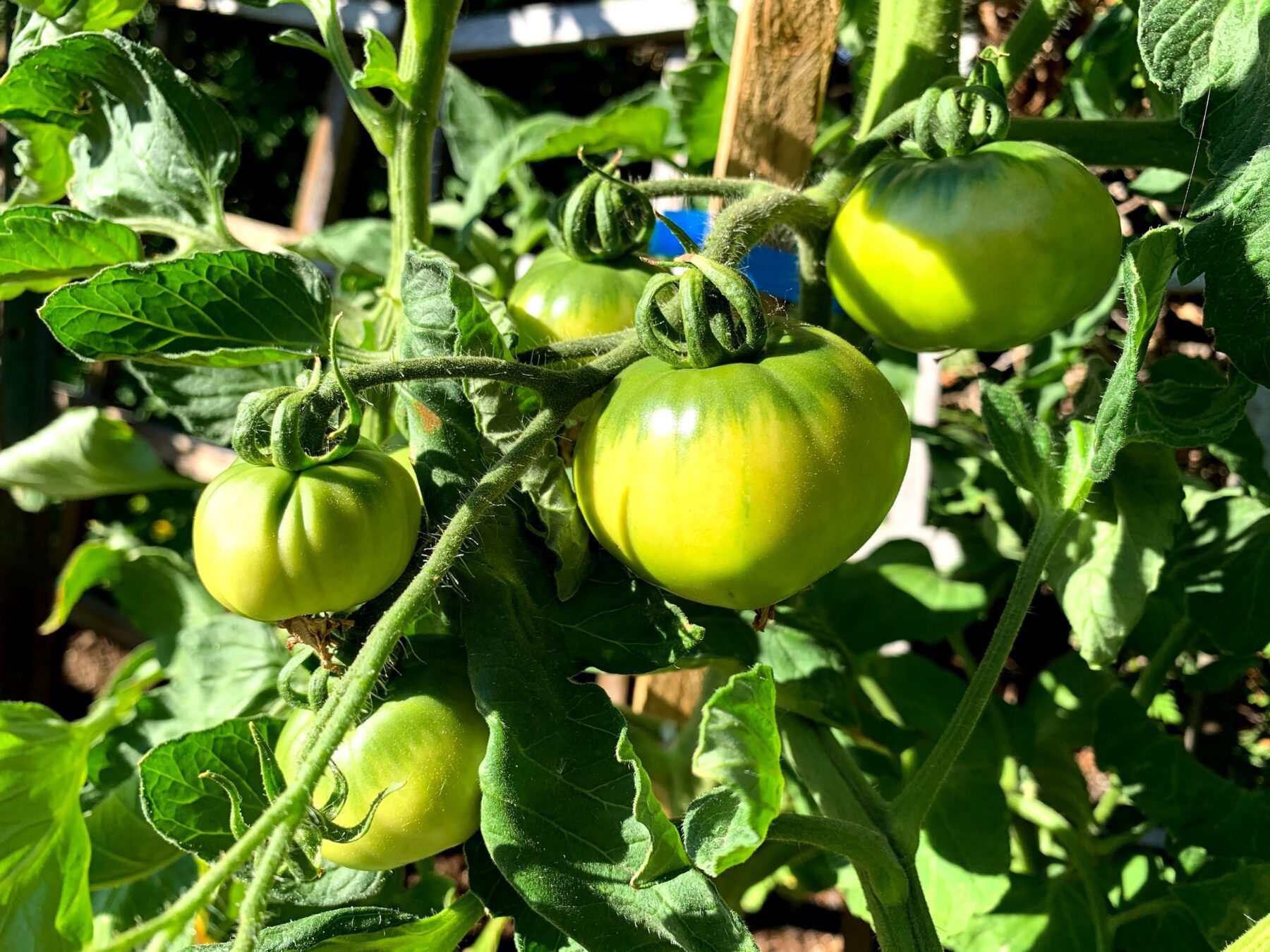“Can I buy one of your tomatoes?”
The question surprised me. It was fairly early in the morning—the best time for removing suckers from the tomato plant; the dew keeps them pliable and less prone to peeling—and our backyard garden is a good distance from the road, but the voice was close.
Randy introduced himself; he was using a motorized wheelchair, stickers adorning nearly every inch and several flags waving from the back. He regularly traveled up and down our little side street. To and from where, I’m not exactly sure.
“They’re not ripe yet,” I said as I turned to search for anything that was even getting orange, let alone red.
“Oh, that’s okay. I want a green one.”
“Oh!”
“Yeah, I like ‘em big and green, but I can’t find them in the store.”
“You just wait there.”
Darting into the house I grabbed an old grocery bag and came back out to the garden. Taking the three biggest green tomatoes I could find, I placed them in the bag and walked them out to Randy in the driveway.
Apparently, he’d been eyeing our tomatoes for some time, but this was the first time I was out in the garden when he happened to be going by. He didn’t waste his chance. He was going to eat them that night (and no, he didn’t have to pay for them).

It’s easy to think that loving our neighbors takes immense amounts of time and energy and resources. After all, when Jesus answered the question of who qualified as a neighbor, he told of a man who sacrificed his time, possessions, and his money.
It’s tempting to believe that the needs of those around us are beyond our ability to meet. We don’t have the extra funds to help meet someone’s rent payment. We don’t have time to help that elderly woman with her yard work. We have places to go and things to do of our own!
Sometimes imagining the needs of our neighbors keeps us from doing what we can.
What if part of the point of the parable of the Good Samaritan is that we simply need to use whatever it is we have available?
It’s unlikely that the Samaritan was, by occupation, an ancient EMT who happened to be traveling along with the right tools to take care of a badly injured person. It’s more likely that he was simply a traveler. The oil he used was for his own food supply. The bandage strips were torn from his own tunic (or perhaps a spare for the cold night). The Samaritan used what he had in the moment to meet a need.
The need of the man broken and bleeding on the ground would have been difficult to miss. Even the two travelers who chose to ignore it, still noticed him. But the truth is that not every need is nearly so clear or so stark. Nor every opportunity to be a neighbor is draped in distress. The parable of the Good Samaritan isn’t exhaustive for how we love our neighbor. It was one example and a bit of a “no brainer” one at that.
The command is to love a neighbor as yourself. Who among us merely meets our basic needs? I’m certainly not eating merely to keep myself alive by the strictest definition. If we only help our neighbor when they are in deep distress and we are unavoidably confronted with it, we aren’t fulfilling the second greatest commandment.
We all pursue our enjoyments and our flourishing. We live searching for joy and fulfillment. Loving a neighbor does those same things for them.
Loving a neighbor shouldn’t wait until we are confronted with their mangled heart, mind, soul, or body. What might it look like if instead of thinking of loving neighbors as helping them in a time of desperate trouble, we began to ask ourselves how we can help them flourish, or maybe even just have a good day or a favorite meal?
I don’t care for green tomatoes. If I can love a neighbor by picking a big green tomato, then a few less on the vine is okay.
J.R. Hudberg is an executive editor with Our Daily Bread Ministries. He’s the author of Encounters with Jesus and Journey through Amos. He and his family live in Grand Rapids, Michigan.





 Copyright
2024
Root and Vine
Copyright
2024
Root and Vine